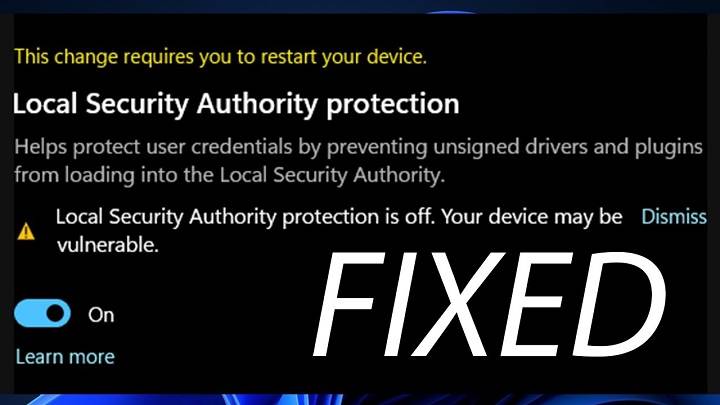Local Security Authority Protection (LSASS) is a crucial component of Windows operating systems, responsible for validating users for various tasks on a computer. However, the disabling or misconfiguration of LSASS can pose significant security threats, leaving systems vulnerable to attacks and unauthorized access. This article explores the implications of LSASS being turned off, the risks involved, and the preventive measures to secure your system effectively.
Understanding Local Security Authority Protection
Local Security Authority (LSA) is a crucial part of the Windows security architecture, serving as the primary mechanism for validating user logins on a system. LSASS, the Local Security Authority Subsystem Service, is a critical process in the Windows operating system responsible for authenticating users, enforcing security policies, and managing access tokens. When LSASS protection is turned off, it exposes the system to various security risks.
Risks of Disabling LSASS Protection

Turning off LSASS protection can leave your system vulnerable to multiple security threats, including:
Credential Theft
- Disabling LSASS protection increases the risk of credential theft, allowing attackers to intercept sensitive login information and passwords.
Unauthorized Access
- Hackers can exploit the absence of LSASS protection to gain unauthorized access to the system, potentially compromising sensitive data or installing malware.
System Instability
- Disabling LSASS protection may lead to system instability, crashes, or unexpected shutdowns due to the absence of critical security checks.
Impact on System Performance
When LSASS protection is turned off, it can significantly impact system performance, leading to:
- Increased vulnerability to security breaches.
- Slower response times and system instability.
- Higher potential for system crashes or unauthorized access.
Preventive Measures to Secure LSASS
To mitigate the risks associated with LSASS being turned off, consider the following preventive measures:
Keep Systems Updated
- Regularly update your operating system and security software to ensure that your system is protected with the latest security patches and updates.
Enable LSASS Protection
- Ensure that the LSASS protection is enabled and properly configured to maintain a secure system environment.
Implement Additional Security Measures
- Employ firewalls, antivirus software, and intrusion detection systems to enhance overall system security and prevent unauthorized access.
Regular Security Audits
- Conduct regular security audits to identify and rectify any vulnerabilities, ensuring the overall security of your system.
Local Security Authority Protection (LSASS) is a critical component in safeguarding the Windows operating system. Disabling LSASS protection poses severe security risks, potentially leading to data breaches, unauthorized access, and system instability. By understanding the risks and implementing preventive measures, users can significantly enhance their system’s security and protect against potential threats associated with LSASS being turned off. Maintaining a proactive approach to security measures and staying vigilant is crucial in safeguarding your system from potential vulnerabilities and attacks.


